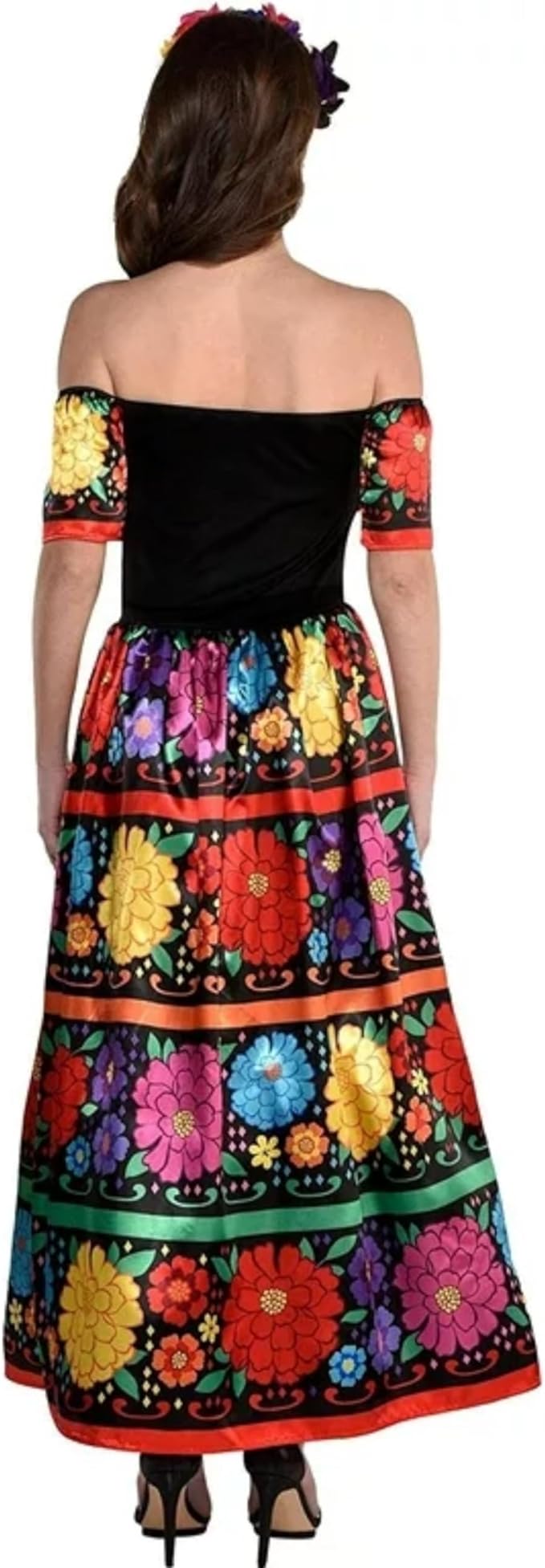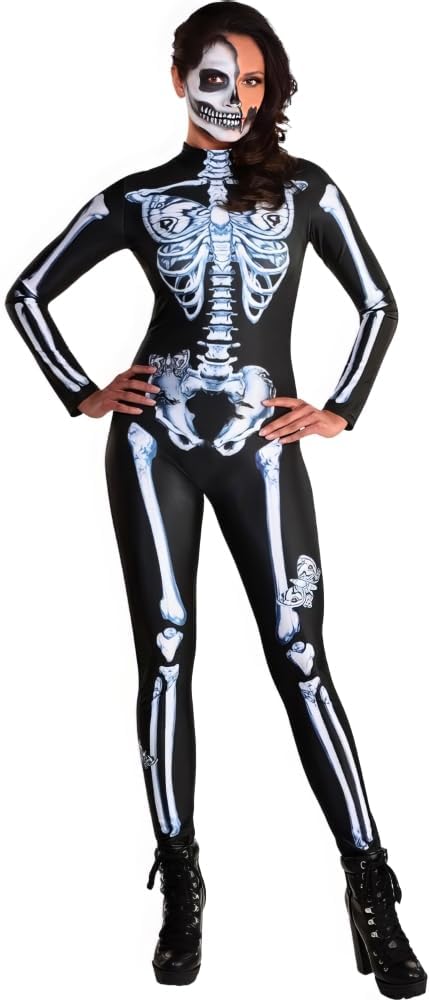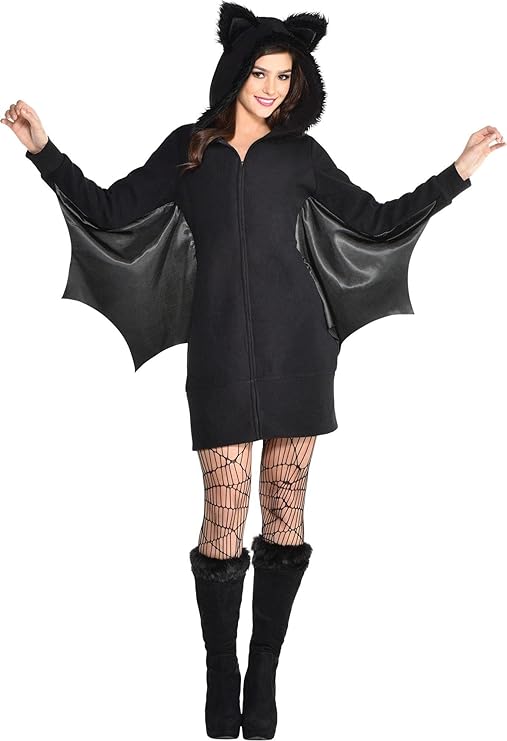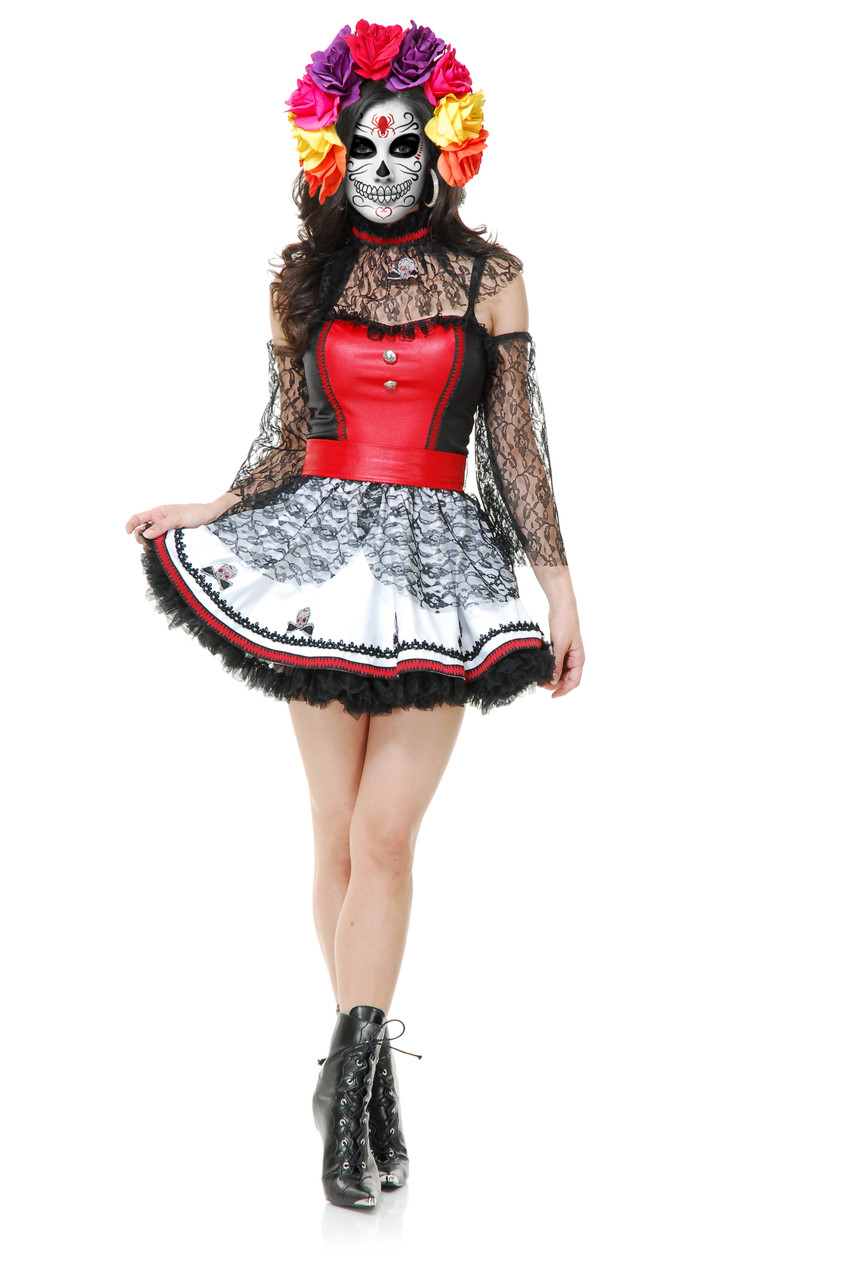F”The Spirited Tapestries of Dia de los Muertos Dress-Up” delves into the vibrant tradition of costume and makeup during the Mexican Day of the Dead festival. This rich cultural practice is a visual feast, merging history, artistry, and personal expression. The article explores the evolving nature of these dress-up rituals—from their indigenous origins to modern interpretations—and examines how they serve as a conduit for education and cultural sensitivity. As a colorful homage to ancestors, the festivity’s attire weaves together a tapestry that is both a reflection of the past and a celebration of life’s continuity.
The Essence of Tradition
Tracing Back to Indigenous Roots
Therefore, The traditional attire of Dia de los Muertos harks back to the underlying synthesis of ancient pre-Hispanic customs and European influences brought by Spanish colonization. The indigenous people of Mexico, such as the Aztecs, held a cyclical view of the universe. And life was an interwoven tapestry of births and deaths; costumes during festivals were adorned with symbols reflecting this belief. The vibrant colors, indigenous motifs, and handmade garments seen in today’s dress-up still echo those early practices. Each year, elaborate outfits blend feathers, face paintings, and historical emblems to celebrate the lives of the dearly departed and acknowledge the ancestry that has shaped this rich cultural festivity.

The Calavera: Icon of the Eternal Cycle
The calavera, a decorated skull, is a quintessential emblem within the Dia de los Muertos tradition, artfully integrated into the fabric of the dress-up culture. Symbolically, the skull has long been believed to encapsulate the soul’s enduring nature; its frequent portrayal during the festivities is a reminder of the transitory nature of life and the inescapable embrace of death. Its universal representation across costume design, sugar crafts, and intricate face painting stands in defiance of death’s finality, morphing it from a specter of fear to a familiar, if not welcoming, presence. Celebrants adorn themselves with calavera-inspired makeup, creating intricate patterns that bring ancestral spirits closer in a vivid dance of death and life that unites all participants under its timeless gaze.
Part II: A Canvas for Cultural Identity
The Vibrancy of La Catrina
One prominent figure in Dia de los Muertos dress-up is La Catrina, elegantly dressed in her hat and gown. La Catrina symbolizes the elegant and joyful nature of the holiday and serves as a unifying force among celebrants. Regardless of their social or economic backgrounds, people come together in the spirit of celebration, showcasing their creativity and individuality through their costumes. La Catrina’s vibrant and elaborate attire reflects the exuberance of the festivities. Capturing the essence of life and commemorating the departed with joy and reverence.
Attire as a Tribute
During Dia de los Muertos, many people choose to incorporate personal tributes to their lost loved ones into their elaborate costumes. Every element, from the choice of colors to the inclusion of specific symbols and motifs, becomes a poignant homage to the individuals being honored. Favorite colors may be worn as a symbol of remembrance or to represent the departed’s joyful spirit. Hobbies, interests, and meaningful objects are often included as subtle yet powerful reminders of the cherished memories shared with the departed. This personalization of the dress-up tradition adds depth and meaning to the celebration, creating a deeply heartfelt tribute to those who have passed away.

By infusing their attire with personal symbols. Individuals participating in Dia de los Muertos dress-up express their unique cultural identities and pay homage to their heritage. They tap into the profound connection between their individual stories and the collective narrative of the celebration. Each costume becomes a canvas for self-expression. Embracing both the vibrancy of the present moment and the enduring legacy of the past.
Part III: Contemporary Twists on Historical Garb
The Integration of Modern Aesthetics
Moreover, Dia de los Muertos dress-up now fuses tradition with modern flair. Simple fabrics have given way to costumes glowing with LEDs and light-sensitive paints. Technology now accentuates the spiritual side of the celebration. Contemporary materials blend with classic lace, creating a mix of old and new. These modern outfits allow wearers to celebrate both history and innovation during the festivities.

Global Influences on Costume Evolution
In addition, The worldwide spread of Dia de los Muertos has inspired a melting pot of cultural expressions within its traditional dress-up. People now interweave authentic Mexican garments with global sartorial traits, incorporating elements from different cultures into their attire. They may reimagine a Japanese-inspired kimono with Mexican floral embroidery or adorn a classic American leather jacket with Aztec symbols. This blending of cultural influences creates a unique fusion of styles that reflects the diversity and interconnectedness of the modern world.As people from various backgrounds adopt and adapt the dress-up customs. They infuse their own heritage into the wardrobe, creating new, shared traditions. These evolving styles reflect a tapestry that’s being collaboratively embroidered by the multitude of global admirers who find common ground in the ubiquitous themes of love, loss, and remembrance.

Part IV: Educational Outcomes and Respectful Participation
Learning Through Celebration
Therefore, Dia de los Muertos costumes serve as educational tools, breathing life into the pages of history and cultural anthropology. Through the use of vibrant attire and emblematic makeup. Children and adults alike engage with the visual stories of a rich heritage that textbooks alone cannot convey. Schools harness these living displays, inviting students to create their own costumes and explore the deep symbolism behind each choice of color, pattern, and accessory. As the community comes together to celebrate. These lessons go beyond the classroom. Instilling a sense of tradition and cultural richness that fosters a greater appreciation for the variegated tapestry of human history. And the multifaceted expressions of mourning and joy intertwined in Dia de los Muertos.

Celebrating with Cultural Sensitivity
Finally, Amid the festival’s spreading popularity, it is critical to honor the fine line between appreciation and appropriation. The beauty of the festivity’s attire sparks global inspiration. Yet there’s a growing consciousness about engaging respectfully with cultural practices. Events and workshops often incorporate discussions on the holiday’s history, emphasizing the significance behind every adornment and face paint design. With active efforts to educate participants on the appropriate ways to celebrate. Dia de los Muertos maintains its sanctity. Costume-makers and celebrants alike are learning to pay tribute without trivializing the culture, ensuring that as the tradition widens its embrace. It remains firmly rooted in the authenticity and respect it deserves.


